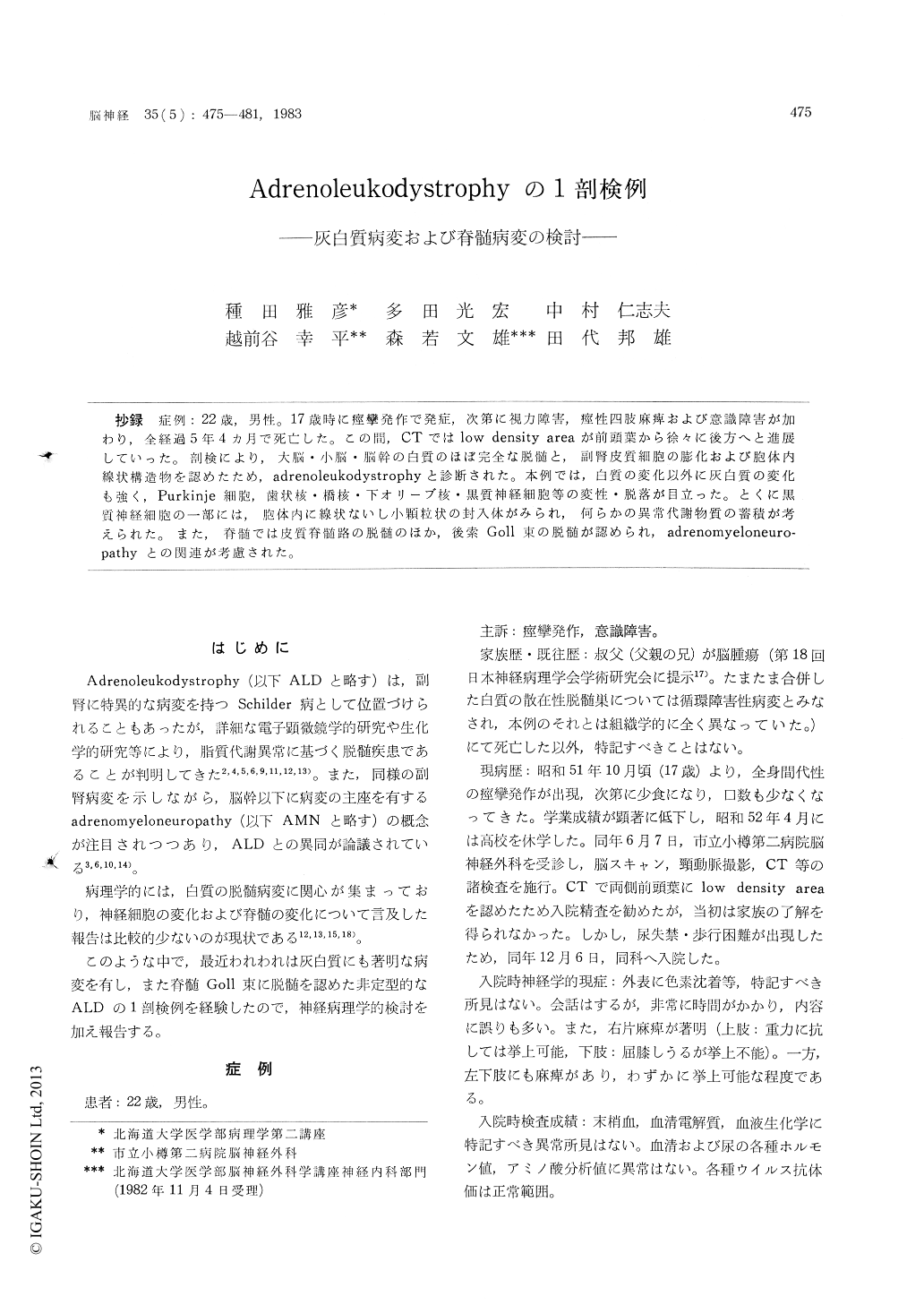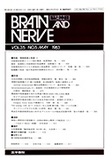Japanese
English
- 有料閲覧
- Abstract 文献概要
- 1ページ目 Look Inside
抄録 症例:22歳,男性。17歳時に痙攣発作で発症,次第に視力障害,痙性四肢麻痺および意識障害が加わり,全経過5年4ヵ月で死亡した。この間,CTではlow density areaが前頭葉から徐々に後方へと進展していった。剖検により,大脳・小脳・脳幹の白質のほぼ完全な脱髄と,副腎皮質細胞の膨化および胞体内線状構造物を認めたため,adrenoleukodystrophyと診断された。本例では,白質の変化以外に灰白質の変化も強く,Purkinje細胞,歯状核・橋核・下オリーブ核・黒質神経細胞等の変性・脱落が目立った。とくに黒質神経細胞の一部には,胞体内に線状ないし小顆粒状の封入体がみられ,何らかの異常代謝物質の蓄積が考えられた。また,脊髄では皮質脊髄路の脱髄のほか,後索Goll束の脱髄が認められ,adrenomyeloneuro—pathyとの関連が考慮された。
An autopsy study on a case of adrenoleukodystro-phy is reported. The patient had been suffering from the disease for 5 years and 4 months before his demise.
He was healthy until 17 years old when he first had a convulsion attack. Visual disturbance, spastic tetraplegia and unconsciousness gradually develop-ed over next 5 years. Sequential CT showed an area of low density with a linear high density in the white matter that progressed from the frontal to the parieto-occipital lobes.
Histologically, complete demyelination in the white matter of cerebrum, cerebellum and brain stem with sparing of subcortical white matter (U-fiber) was present. In the demyelinated area, there were scattered astrocytes and perivascular macrophages. Adreno-cortical cells in the zona fasciculata and reticularis showed ballooning and contained many cytoplasmic striations which con-sisted of linear or slightly curved cleft:like inclusions ultrastructurally. These findings were thought to be diagnostic of adrenoleukodystrophy.
The gray matter also showed striking changes characterized by degeneration and loss of Purkinje cells and of neurons in dentate nuclei, pontinenuclei, inferior olivary nuclei and substantia nigra. Especially some neurons in substantia nigra had linear and/or granular intracytoplasmic inclusions, which may reflect abnormal lipid metabolism.
In the spinal cord, there was demyelination of corticospinal tracts. In addition, demyelination of gracile tracts (Goll) was present, which had never been reported in adrenoleukodystrophy. And the change of Goll's tracts may represent the same kind of lesion as that of adrenomyeloneuropathy. Therefore, we believe that this case belongs to an atypical form of adrenoleukodystrophy and has close relation to adrenomyeloneuropathy.

Copyright © 1983, Igaku-Shoin Ltd. All rights reserved.


